Geo-Targeting & Proximity Marketing: Boost Your Local Reach
In today’s digital world, businesses must use location-based marketing to stay competitive. By focusing on customers’ locations, they can boost their local presence. This approach also helps draw more people to their stores.
Geo-targeting and proximity marketing are key tools for reaching the right people at the right time. These strategies let businesses send out tailored messages and offers. They make sure customers get experiences that speak to them personally.
Key Takeaways
- Boost local reach with targeted marketing efforts
- Increase foot traffic with location-based strategies
- Deliver personalized experiences to customers
- Stay ahead of the competition with local SEO
- Maximize ROI with data-driven marketing decisions
Understanding the Power of Location-Based Marketing
Location-based marketing has changed how businesses talk to their customers. It’s now key in the digital world. This method lets businesses target their audience better, using location data in their marketing plans.
The Evolution of Local Marketing Strategies
Local marketing has changed a lot over time. New tech and how people shop have led to these changes. Old ways like print ads and direct mail are now replaced by geofencing and targeted advertising.
These new methods help businesses hit their target audience more accurately. This makes their marketing work better.
- Mobile tech has made it easier to target customers by location.
- Data analytics are key to knowing what customers like.
- Location-based marketing is now a big part of marketing plans.
Why Location Matters More Than Ever
In today’s market, knowing where your customers are is crucial. Location-based marketing helps businesses connect with people in real-time. It boosts foot traffic and sales.
By using location data, businesses can make campaigns that really speak to their local customers.
- More foot traffic and sales
- Better customer engagement
- Better targeting
What is Geo-Targeting & Proximity Marketing?
Location-based marketing has grown, leading to two key strategies: geo-targeting and proximity marketing. These tools help businesses reach their audience better by using location data.
Defining Geo-Targeting
Geo-targeting means showing content or ads based on where users are. It uses IP addresses, GPS, and cell towers to pinpoint locations. This way, businesses can make sure their ads reach the right people in the right places.
For example, a store can send special deals to people nearby. This makes marketing more effective.
Understanding Proximity Marketing
Proximity marketing goes further by focusing on users near a business. It uses beacons and Wi-Fi to pinpoint exact locations. This lets businesses offer timely, relevant deals to nearby customers.
For instance, a restaurant can send a discount to people walking by. This makes marketing more personal and engaging.
How They Work Together
Geo-targeting and proximity marketing can be used together for a strong marketing plan. They help businesses reach more people and engage with those nearby. The key is to use location intelligence to guide marketing decisions.
Some benefits of using both include:
- More people visiting your store
- Better customer interaction
- More focused marketing
The Technology Behind Location Intelligence
Location intelligence relies on a mix of technologies. These work together to give exact location data.
This teamwork helps businesses use geo-targeting and proximity marketing well. The main technologies include:
GPS and Cell Tower Triangulation
GPS (Global Positioning System) uses satellites orbiting Earth to give locations to GPS receivers. Cell tower triangulation uses nearby cell tower signals to find a device’s location. Together, they pinpoint a user’s spot accurately.
Wi-Fi Positioning Systems
Wi-Fi positioning systems use Wi-Fi access points’ unique IDs to find a device’s location. It’s great in cities and indoors where GPS signals are weak.
Bluetooth and Beacon Technology
Bluetooth Low Energy (BLE) beacons send signals to smartphones and tablets nearby. This tech lets businesses target marketing in small areas, like stores or events.
Key Strategies for Effective Geofencing
Effective geofencing strategies are key for businesses wanting to increase their local reach. Geofencing uses virtual boundaries to target customers based on their location. This technology helps businesses reach their audience with precision.
Setting Up Virtual Boundaries
First, businesses need to decide where they want to target. This could be around their store, competitors, or areas where their customers are. Accurate geofencing needs precise GPS and knowing the audience’s habits.
Trigger-Based Marketing Actions
Trigger-based marketing is vital for geofencing. It starts when a customer enters or leaves a geofenced area. For example, a business can send a welcome message or a special offer when someone enters their area. This boosts customer interaction and increases foot traffic.
Competitor Targeting Techniques
Setting up geofences around competitors is another strategy. It helps attract customers who are visiting rivals. Competitor targeting is a smart way to outdo competitors in local markets.
Using these strategies, businesses can make their geofencing campaigns more effective. This boosts their local SEO and targeted advertising.
Implementing Proximity Targeting for Different Business Types
Mobile devices are everywhere, making proximity targeting a key tool for local engagement. It lets businesses send messages that are right on target, boosting foot traffic and sales.
Retail and Shopping Centers
Retailers and shopping centers can send special offers to customers nearby. This is great for sales or holidays, encouraging people to buy more.
Restaurants and Hospitality
Restaurants and hotels can welcome regulars with special offers. They can also send updates about events or when tables are ready.
Events and Entertainment Venues
Event organizers can send updates to attendees in real-time. This improves the event experience and can boost sales of merchandise or food.
Service-Based Businesses
Salons, gyms, and medical offices can remind clients of appointments. This helps reduce no-shows and keeps schedules full.
Proximity targeting is a game-changer for local marketing. It drives engagement and sales across various sectors. Used well, it offers a big return on investment.
Mobile Marketing Tactics for Local Reach
Mobile devices are now a big part of our lives. Businesses are using mobile marketing to reach more people locally. These strategies help them connect with their audience better, bringing in more customers.
There are several ways to improve local reach through mobile marketing:
- App-Based Location Services: Businesses use apps to send offers and info to users nearby.
- SMS and MMS Location Campaigns: They send special messages to customers based on their location.
- Mobile-Optimized Landing Pages: Making sure landing pages work well on mobile devices is key for a good user experience.
App-Based Location Services
App-based location services use GPS to send users content based on their location. This can include push notifications about sales or events when a customer is near the store.
SMS and MMS Location Campaigns
SMS and MMS campaigns send targeted messages to customers based on their location. Businesses use these to tell customers about limited-time offers or upcoming events.
Mobile-Optimized Landing Pages
Mobile-optimized landing pages are important for a good user experience on mobile devices. They need responsive design and fast loading times to keep users engaged and encourage them to take action.
Integrating Local SEO with Geo-Targeting
Using local SEO and geo-targeting together can really boost a business’s online presence. It makes sure the business shows up in local searches and targets nearby customers. This combo is a powerful way to get more people to visit your store or website.
Google My Business Optimization
Optimizing your Google My Business listing is key for local SEO. You need to claim and verify your listing, make sure all your business info is correct, and post updates often. A good Google My Business profile can help your business rank higher in local searches.
Location-Specific Keywords
Using keywords that mention your location is crucial for local SEO. Add terms like “near me” or your city to your website and social media. This tells search engines you’re a local business, helping you rank better in local searches.
Local Content Creation Strategies
Creating content that speaks to your local audience is important. Write about local events, news, or tips related to your business. This attracts local search traffic and boosts your geo-targeting efforts.
Success Stories: Geo-Targeting & Proximity Marketing in Action
Real-world examples show how geo-targeting and proximity marketing boost local engagement. Businesses in many industries have seen better customer interaction and more sales. This is thanks to using these location-based marketing tactics.
National Brand Local Campaigns
National brands have used geo-targeting to reach local audiences better. For example, a big retail chain sent special deals to people near their stores. This led to a 25% increase in foot traffic.
A food and drink company gave discounts to people close to their places. This boosted sales by 15% during the campaign.
Small Business Success Stories
Small businesses have also seen big benefits from these tactics. A local boutique used geofencing to reach people nearby. They got a 50% open rate on their messages.
A coffee shop used beacons for proximity marketing. They offered discounts when customers were near. This led to more repeat business.
Innovative Implementation Examples
Innovative businesses keep finding new ways to use these tactics. An event organizer promoted their events to people in specific areas. This led to a 30% higher attendance rate.
A fitness center used proximity marketing to welcome members with personalized messages. This improved their gym experience.
These stories show how effective geo-targeting and proximity marketing are. They help businesses of all sizes reach more customers and improve their marketing.
Measuring Success: Key Metrics for Location-Based Campaigns
Businesses using location-based marketing must track certain metrics to see how well their campaigns do. It’s important to focus on key performance indicators that really matter for the business.
Foot Traffic Attribution
Foot traffic attribution is a key metric. It shows how many customers visit a store after seeing a marketing campaign. By looking at foot traffic, businesses can see if their campaigns are working well.
Conversion Rate Analysis
Conversion rate analysis tracks how many people do what the campaign wants them to do, like buying something. This helps businesses see if their campaigns are making money.
ROI Calculation for Proximity Marketing
Figuring out the ROI for proximity marketing is key. It shows how much money is made compared to what it costs. This helps businesses decide if they should keep investing in these campaigns.
By watching these key metrics, businesses can improve their marketing. They can make their campaigns better and get more people to buy or sign up.
Privacy Considerations and Compliance
As more businesses use geo-targeting and proximity marketing, they face tough privacy rules. They must follow laws and keep users’ trust.
The General Data Protection Regulation (GDPR) and the California Consumer Privacy Act (CCPA) are key rules. They guide how businesses use location-based marketing.
GDPR and CCPA Implications
The GDPR and CCPA affect businesses using location-based marketing a lot. Important points include:
- Data Collection Transparency: Tell users what data is collected and why.
- User Consent: Get clear consent from users before using their location data.
- Data Protection: Keep user data safe with strong security.
Obtaining Proper User Consent
Getting the right consent is key for location-based marketing. Businesses should:
- Explain the good things about sharing location data.
- Make it easy for users to opt out.
- Make sure consent is given freely and can be taken back anytime.
Balancing Personalization and Privacy
Businesses need to find a balance between personalizing experiences and respecting privacy. Ways to do this include:
- Anonymizing Data: Use anonymous data for marketing that doesn’t hurt privacy.
- Granular Control: Let users control their data sharing in detail.
Conclusion: Maximizing Your Local Reach Through Strategic Location Marketing
Geo-Targeting & Proximity Marketing are key for businesses wanting to grow locally. They use location data and smart marketing to reach more people. This helps companies show up stronger in their area.
Good location marketing means knowing how to use different tech. This includes GPS, cell towers, Bluetooth, and beacons. These tools help target customers based on where they are.
To really make an impact, businesses need a solid plan. They should use geofencing, set up marketing actions, and work on local SEO. These steps can bring in more customers, increase sales, and grow profits.
The world of digital marketing is always changing. But location marketing will keep getting more important. By keeping up with Geo-Targeting & Proximity Marketing, companies can build a strong local base. This leads to lasting success.
FAQ
What is the difference between geo-targeting and proximity marketing?
Geo-targeting aims at users in a certain area. Proximity marketing targets users near a specific spot, using beacons or geofencing.
How does geofencing work?
Geofencing sets a virtual fence around a spot. It acts when someone enters or leaves that area. This sends messages or alerts to nearby users.
What are the benefits of using location-based marketing?
It helps businesses reach their audience better. It boosts foot traffic, sales, and customer interaction. It also gives insights into what customers like.
How can businesses ensure compliance with privacy regulations when using geo-targeting and proximity marketing?
Businesses need to get user consent and follow laws like GDPR and CCPA. They must be clear about data use, offer opt-out, and keep data safe.
What metrics should businesses track to measure the success of their location-based campaigns?
Look at foot traffic, conversion rates, and ROI. These metrics help see if campaigns work and guide future plans.
How can businesses integrate local SEO with geo-targeting?
Optimize Google My Business, use local keywords, and create local content. This boosts online presence and attracts more local customers.
What are some common applications of proximity targeting?
It works for many businesses like retail, restaurants, and services. It sends special offers, deals, or info to users nearby.


















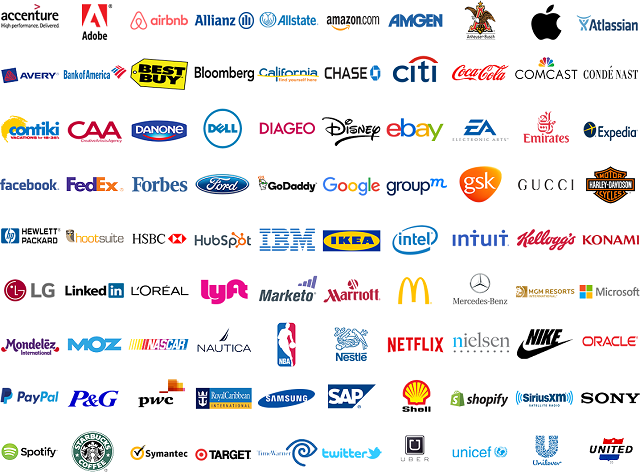














No comments